You can take a position on the price of an instrument through contract for difference (CFD) with the FP Markets trading platform. CFD trading with FP Markets involves no ownershop of the underlying asset. One of the most remarkable characteristics of FP Markets CFDs is that they give investors the opportunity to profit from declining markets in addition to those that are rising, and vice versa.
A contract for difference, also known as a CFD, is a form of financial derivative available on FP Markets, that enables the trader to speculate on the movement of the price of an asset against FP Markets.
FP Markets CFDs are distinguished from other financial products on the market by a number of important characteristics.
You are not actually the owner of the underlying asset when you engage in CFDs with FP Markets, CFDs are a type of derivative trading; rather, you are merely making a speculation as to the extent to which its value will increase or decrease over the course of a given period of time against the broker FP Markets.
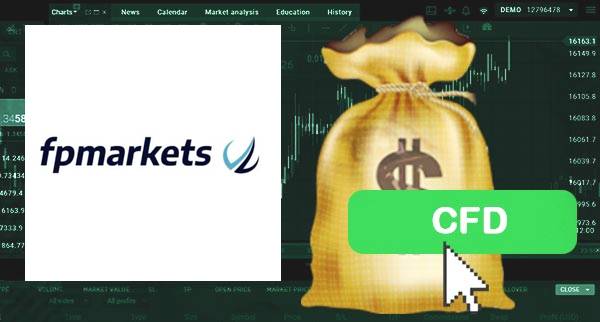
The type of derivative known as a contract for difference (CFD) enables investors to use leverage on the FP Markets trading platform to enter into a trade by initially contributing only a portion of the asset's full value. This means that you can invest a smaller amount of money to trade a position that is higher in value with FP Markets; however, it also means that your losses will be magnified if you make a significant error or your FP Markets CFD trade does not go in your favor. FP Markets leverage can range from 2:1 all to way to 30:1. FP Markets is limited due to financial regulation in your local country. The greater the FP Markets leverage the greater the risk. There is a high percentage of losing traders with FP Markets leveraged CFD products. FP Markets traders should be aware of the risks before trading leverage on FP Markets.
Trading contracts for difference (CFDs) on FP Markets involves using leverage, which means that you can control a large position in an asset without having to put up the full cost of that position. If you want to open a FP Markets trade on 500 shares of Tesla, for instance, you might be required to put up only 5 percent of the total amount with FP Markets of the trade instead of the full amount.
There are two different types of margin used in FP Markets CFD trading. In order to initiate a FP Markets position, it is necessary to first make a FP Markets margin deposit. After the FP Markets trade has been opened, there is a necessary amount of FP Markets maintenance margin that must be paid. Should you be unable to respond to this FP Markets margin call by making an additional deposit of funds, FP Markets may decide to close your position.
FP Markets provide CFD clients with access to a selection of more than a hundreds of different CFD markets, some of which may include CFD US stocks, CFD UK Stocks, Indices CFDs, CFD commodities, Forex currency CFDs, and others on the FP Markets CFD trading platform. Some FP Markets CFD financial instruments may not be available on all countries.
You have the option of trading stocks, indices, commodities, and forex CFDs when you use FP Markets. You will find that every type of FP Markets CFD has its own requirements for spread, available leverage, and margin, which you can use to better plan your FP Markets trade and its associated costs.
Your choice of underlying asset on FP Markets is an important decision to make when trading contract for difference (CFD) products like shares, indices, or commodities with FP Markets. Whatever financial instrument you trade with FP Markets make sure you have an in-depth understanding of the underlying assets that you are trading with FP Markets. Alternately, you can find out which FP Markets markets are making headlines by keeping up with the most recent market analysis reports and videos on the FP Markets platform. You can learn the particulars of each FP Markets CFD by going to the FP Markets page that is dedicated to the contract specifications. On this FP Markets page, you will find information about the specifics of FP Markets instrument leverage as well as the trading costs.
Depending on whether you believe that the price of your asset will go up or down, you have the option of opening either a long position (buying) or a short position (selling) on FP Markets.
Because the value of a unit of the CFD that you are trading on FP Markets will vary depending on the instrument, you need to determine the number of FP Markets units that will provide you with the greatest benefit.
FP Markets CFD traders are spared many of the costs associated with traditional trading; however, they are still required to pay FP Markets spreads, which are the FP Markets costs associated with entering and leaving positions.
FP Markets CFDs are exempt from stamp duty in some countries because the underlying asset is not owned by the FP Markets investor; however, capital gains tax on FP Markets trades may still be applicable depending on your country of residence. When compared to traditional trading, FP Markets CFDs offer one area in which traders can cut costs and may save money overall. Please check your situation regarding FP Markets CFD taxes with a local tax professional.
You could sell a contract for difference (CFD) on FP Markets that is based on Gas if you think the price of gas is going to go down on FP Markets. You will make a profit when you close the short position if the price of Gas goes down on FP Markets, but you will incur a loss with FP Markets if the price of Gas goes up. The profit or loss from a FP Markets position is not realised until after the FP Markets position has been closed, regardless of whether the position was long or short with FP Markets.
If you believe an asset's price will go down in the future, you have the option to sell it when trading FP Markets CFDs. You can make money off of falling prices with FP Markets by engaging in this strategy, which is also known as "going short." Because you are purchasing an asset when you engage in traditional share dealing, the only way for you to make a profit is if the price of the asset increases.
Using FP Markets CFDs to sell short is accomplished in essentially the same way as using them to buy FP Markets long positions. However, rather than buying contracts to open your FP Markets position, you will be selling the contracts. By doing so, you will open a FP Markets trade that results in a profit if the price of the underlying market falls, but a FP Markets loss if the price of the underlying market rises.
Because FP Markets CFDs are leveraged, it is essential to carefully manage any risk that may arise when trading with FP Markets. Take FP Markets profits and cut losses are two important tools that can be used when trading with FP Markets to help control risk on each trade. Standard stop losses are not effective one hundred percent of the time with FP Markets because they are prone to slippage, which occurs when the market gaps' over your FP Markets stop.
You must educate yourself on the potential downsides of trading CFDs on the FP Markets trading platform.
You have the option of trading a contract for difference (CFD) on FP Markets that expires or one that does not; daily FP Markets CFDs have an expiration date, whereas FP Markets forward CFDs will expire at a predetermined time in the foreseeable future.
Daily CFDs on FP Markets do not have an expiration date, whereas FP Markets forward CFDs will expire on a specific date at some point in the future.
Daily contract for difference FP Markets trades are typically designed for positions that are held for a relatively short period of time with FP Markets; however, they may be more cost effective if held with FP Markets for several days or longer.
Yes. CFDs are a popular choice among day traders who use FP Markets because of the high risk leverage that is available with them as well as the variety of FP Markets markets that can be traded.
CFDs, or contracts for difference, are a popular way for FP Markets investors to buy and sell across a variety of financial markets available with FP Markets. This provides active FP Markets traders with several benefits.
You can engage in trading on declining markets with FP Markets CFDs in addition to trading on rising markets even if you do not own any real assets like stock on FP Markets.
You won't have to commit a large amount of capital with FP Markets if you use a modest sum of money to control a position that has a significantly higher value. FP Markets traders must understand that leverage holds a high amount of risk.
Due to the fact that FP Markets CFDs enable short selling, investors frequently use them as a form of "insurance" to compensate for losses that have been incurred in other assets in their portfolios. This practise is referred to as hedging and can be done on FP Markets.
Hedging existing FP Markets positions is one of the less common applications for contracts for difference (CFDs).
FP Markets financial regulation is the first thing you should check. If a CFD broker does not have a licence or is not subject to any kind of regulation, it is not safe to entrust your money to them. FP Markets is regulated by . Brokers like FP Markets operating online who have been granted official licences by governing bodies in the financial industry are reliable and trustworthy. If you have any problems you may want a financial regulator to help you resolve any issues with FP Markets. Before you sign up, make sure the stated FP Markets regulatory licences are real and valid.
In the event that the value of the assets that underlie a FP Markets investment increases, the FP Markets investor stands to benefit from increased profit returns. Nevertheless, a sudden shift for the worse in market conditions can occur, and this can have an effect on the return on your FP Markets investment.
In nations where trading in FP Markets CFDs is permitted by law, there are laws in place to shield FP Markets investors from potentially deceptive or fraudulent service providers. It's possible that a CFD provider that is not regulated will take an initial margin out of the pooled funds and put it into one or more individual funds. There is a possibility that the CFD providers will not return the money to their customers. FP Markets is well regulated by . This means that the financial regulators will not allow FP Markets to operate in their jurisdiction if they do not stick to specific regulator codes of conduct for clients.
Your current FP Markets contract may become illiquid if there are not many trades taking place in the market for the specific underlying asset that you are trading with FP Markets. Because of the lower prices, the FP Markets CFD provider might be required to cancel open contracts, or if they want the trades to continue operating on FP Markets, some FP Markets traders might be required to make additional FP Markets margin payments.
The financial markets are subject to a wide range of fluctuations, and as a result, the price of the FP Markets CFD may go down prior to the execution of the price that was previously agreed upon with FP Markets. This phenomenon is referred to as gapping. The parties currently holding the existing FP Markets contract might be forced to settle for profits that are lower than they would prefer or pay for FP Markets losses.
Before engaging in any transactions, a trader in FP Markets CFDs is required to first fund his or her FP Markets trading account with a sum of money referred to as the initial margin. FP Markets will check once per day to see if the initial margin you put up is equivalent to the current value of the underlying asset. This step, which is also known as "mark to market," is an essential component of the FP Markets CFD trading process.
You have been given a FP Markets margin call, which means that you are required to immediately pay in additional money in order to bring your FP Markets account in line with the realities of the market. If you are unable to come up with the funds, it is possible that FP Markets will close all of your open trading positions, and you will be responsible for any losses that occur as a result.
Financial markets can be highly volatile when trading FP Markets CFDs.
When the price of an underlying asset experiences a gap, it is possible for it to pass through the stop price that was established with a FP Markets stop loss order. The FP Markets trader suffers a loss that more than they had anticipated because the FP Markets stop order was carried out at the next available price. This can add unexpected risk when trading CFDs with FP Markets.
If something like this occurs, you might end up maintaining your FP Markets position for a longer period of time than you had originally intended, which will result in interest being charged on the FP Markets leverage.
Additionally, there is a possibility that the FP Markets spreads will widen because of liquidity concerns. When trading FP Markets CFDs, it is best to stick with underlying assets that have a high level of liquidity on the FP Markets trading platform.
It is possible that you will make a FP Markets profit if the market moves in your direction; however, it is also possible that you will suffer significant losses if the FP Markets trade goes against you. You can gain exposure to the markets by using FP Markets leverage, which requires you to deposit only a small fraction of the total value of the trade you wish to place with FP Markets.
If you trade on international markets outside of the typical hours of operation for those markets, there is a chance that the balance in your FP Markets account could shift rapidly. It is possible that you will not be able to close-out any of your FP Markets positions on the FP Markets platform if you do not have sufficient funds in your FP Markets account to cover the possibility of incurring losses.
Monitoring your FP Markets account and making adjustments to your FP Markets margin, whether up or down, is recommended.
Maintain a current awareness of the news and events that pertain to the underlying assets you trade on FP Markets. You can control your exposure to FP Markets CFD risk by keeping a close eye on all of your open FP Markets positions.
A stop loss order is an order placed by a FP Markets trader to close his open position in a contract for difference (CFD) when the price of the underlying asset falls below a certain level. This level is referred to as the stop price on FP Markets.
A FP Markets guaranteed stop loss order is used to stop FP Markets orders but has stricter requirements. It ensures the FP Markets trader that their position will be closed and his or her FP Markets market order will be executed, regardless of whether or not the price of the underlying asset gaps fluctuates. FP Markets may charge additional fees for guaranteed stop loss orders.
If you have a FP Markets stop loss order set at a price that is relatively close to the current price of the underlying asset, you will be able to trade FP Markets CFDs with a greater degree of financial leverage. This is due to the fact that the FP Markets stop loss orders should protect you from suffering significant losses with FP Markets in the event that the market moves against you.
However, when trading FP Markets CFDs, you need to exercise extreme caution regarding how closely the price of the asset you are betting on corresponds to its current value on FP Markets.
You can protect yourself from losing more money than is currently available in your FP Markets trading account by making use of a tool called negative balance protection. It eliminates the possibility of the FP Markets trader owing money to the FP Markets broker and prevents the FP Markets trader from having to obtain loans or overdrafts in order to finance their FP Markets trading activities.
FP Markets take profit orders and FP Markets stop loss orders are two important tools that can assist you in managing the risk that is associated with your FP Markets CFD trading.
Stop losses are predetermined levels of a FP Markets trade's losses that, once reached, limit the amount of potential loss that the FP Markets trade is exposed to. Standard FP Markets stop losses, on the other hand, do not have a success rate of one hundred percent because they are susceptible to slippage in the event that your FP Markets position has "gaps" over your stop date.
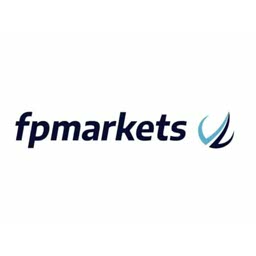
FP Markets CFD stocks: 9,000
FP Markets US CFD stocks: Yes
FP Markets UK CFD stocks: Yes
FP Markets CFD Indices: 14
FP Markets Commodity CFDs: 6
FP Markets ETF CFDs: 250
FP Markets Forex CFDs: Yes
🤴 FP Markets is Used By: 10,000
⚡ FP Markets is Regulated by: Australian Securities and Investments Commission (ASIC), Cyprus Securities and Exchange Commission (CySEC), Financial Services Authority (St. Vincent and the Grenadines)
💵 What You Can Trade with FP Markets: Forex, Minors, Majors, Exotics, Indices, Metals,
💵 Instruments Available with FP Markets: 100
📈 FP Markets Inactivity Fees: No
💰 FP Markets Withdrawal Fees: No
💰 FP Markets Payment Methods: Credit cards, VISA, MasterCard, Debit cards, Bank Transfer, Electronic wallets (eWallets), Neteller, BPAY, POLi, PayPal, Neteller, Skrill, PayTrust, NganLuong VN, Fasapay, Broker to Broker, OnlinePay China, Directa24, Klarna, PayTrust88, Payoneer,
💰 FP Markets Account Base Currencies: USD, GBP, EUR, CHF, JPY, SGD, AUD, CAD, HKD, NZD
FP Markets Risk warning : Losses can exceed deposits

IC Markets CFD stocks: 110
IC Markets US CFD stocks: Yes
IC Markets UK CFD stocks: Yes
IC Markets CFD Indices: 25
IC Markets Commodity CFDs: 20
IC Markets ETF CFDs: 30
IC Markets Forex CFDs: Yes
🤴 IC Markets is Used By: 180,000
⚡ IC Markets is Regulated by: Australian Securities and Investments Commission (ASIC), Financial Services Authority (FSA), Cyprus Securities and Exchange Commission (CySEC)
💵 What You Can Trade with IC Markets: Forex, Majors, Energies, Metals, Agriculturals,
💵 Instruments Available with IC Markets: 232
📈 IC Markets Inactivity Fees: No
💰 IC Markets Withdrawal Fees: No
💰 IC Markets Payment Methods: Credit Cards, VISA, MasterCard, Debit Cards, Visa, MasterCard, Bank Transfer, PayPal, Neteller, Neteller VIP, Skrill, Poli, Cheque, BPAY, UnionPay, FasaPay, QIWI, RapidPay, Klarna, Electronic wallets (eWallets), Broker to Brokers, Thai Internet Banking, Vietnamese Internet Banking,
💰 IC Markets Account Base Currencies: USD, GBP, EUR, CHF, JPY, SGD, AUD, CAD, HKD, NZD
IC Markets Risk warning : Losses can exceed deposits

Roboforex CFD stocks: 8,400
Roboforex US CFD stocks: Yes
Roboforex UK CFD stocks: Yes
Roboforex CFD Indices: 30
Roboforex Commodity CFDs: 20
Roboforex ETF CFDs: 50
Roboforex Forex CFDs: Yes
🤴 Roboforex is Used By: 10,000
⚡ Roboforex is Regulated by: RoboForex Lid is regulated by Belize FSC, License No. 000138/7, reg. number 000001272
💵 What You Can Trade with Roboforex: Forex, Minors, Majors, Exotics, Indices, Metals,
💵 Instruments Available with Roboforex: 100
📈 Roboforex Inactivity Fees: No
💰 Roboforex Withdrawal Fees: Yes
💰 Roboforex Payment Methods: Credit cards, VISA, MasterCard, JCB, Debit cards, Bank Transfer, Electronic wallets (eWallets), Neteller, Skrill, Perfect Money, AdvCash, BPAY, China UnionPay, FasaPay, CashU, WeChat Pay, ecoPayZ, AstroPay, Sofort, Giropay, Poli, Wepay, iDEAL, Payoneer,
💰 Roboforex Account Base Currencies: USD, EUR, XAU
Roboforex Risk warning : Losses can exceed deposits

AvaTrade CFD stocks: 625
AvaTrade US CFD stocks: Yes
AvaTrade UK CFD stocks: Yes
AvaTrade CFD Indices: 32
AvaTrade Commodity CFDs: 27
AvaTrade ETF CFDs: 59
AvaTrade Forex CFDs: Yes
🤴 AvaTrade is Used By: 200,000
⚡ AvaTrade is Regulated by: Central Bank of Ireland, Australian Securities and Investments Commission (ASIC), Financial Services Authority (FSA), South African Financial Sector Conduct Authority (FSCA), Financial Stability Board (FSB), Abu Dhabi Global Markets (ADGM), Financial Regulatory Services Authority (FRSA), British Virgin Islands Financial Services Commission (BVI)
💵 What You Can Trade with AvaTrade: Forex, Minors, Cryptocurrencies, Majors, Exotics, Indices, UK Stocks, US Stocks, Energies, Metals, Agriculturals, ETFs, IPO, Bonds,
💵 Instruments Available with AvaTrade: 1000
📈 AvaTrade Inactivity Fees: No
💰 AvaTrade Withdrawal Fees: No
💰 AvaTrade Payment Methods: Credit cards, VISA, MasterCard, Bank Transfer, Electronic wallets (eWallets), PayPal, Neteller, WebMoney, Payoneer,
💰 AvaTrade Account Base Currencies: USD, GBP, EUR, JPY, AUD
AvaTrade Risk warning : 71% of retail CFD accounts lose money
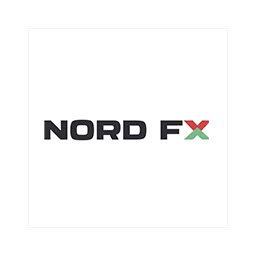
NordFX CFD stocks: 65
NordFX US CFD stocks: No
NordFX UK CFD stocks: No
NordFX CFD Indices:
NordFX Commodity CFDs: 20
NordFX ETF CFDs: 50
NordFX Forex CFDs: Yes
🤴 NordFX is Used By: 10,000
⚡ NordFX is Regulated by: Cyprus Securities and Exchange Commission (CySEC), License No: 209/13
💵 What You Can Trade with NordFX: Forex, Majors, Metals,
💵 Instruments Available with NordFX: 50
📈 NordFX Inactivity Fees: No
💰 NordFX Withdrawal Fees: No
💰 NordFX Payment Methods: Bank Transfer, Neteller, PerfectMoney, WebMoney, FasaPay, CashU, Payza, QIWI,
💰 NordFX Account Base Currencies: USD, EUR
NordFX Risk warning : Losses can exceed deposits
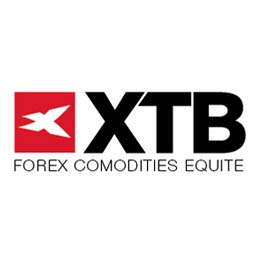
XTB CFD stocks: 1,800
XTB US CFD stocks: Yes
XTB UK CFD stocks: Yes
XTB CFD Indices: 42
XTB Commodity CFDs: 22
XTB ETF CFDs: 114
XTB Forex CFDs: Yes
🤴 XTB is Used By: 250,000
⚡ XTB is Regulated by: Financial Conduct Authority (FCA), FCA number FRN 522157, Cyprus Securities and Exchange Commission (CySEC), CySEC Licence Number: 169/12, Comision Nacional del Mercado de Valores, Komisja Nadzoru Finansowego, Belize International Financial Services Commission (IFSC) under license number IFSC/60/413/TS/19, Polish Securities and Exchange Commission (KPWiG), Dubai Financial Services Authority (DFSA), Dubai International Financial Center (DIFC),Financial Sector Conduct Authority (FSCA), XTB AFRICA (PTY) LTD licensed to operate in South Africa
💵 What You Can Trade with XTB: Forex, Minors, Cryptocurrencies, Majors, Exotics, Indices, UK Stocks, US Stocks, Pennystocks, Energies, Metals, Agriculturals, ETFs,
💵 Instruments Available with XTB: 4000
📈 XTB Inactivity Fees: Yes
💰 XTB Withdrawal Fees: No
💰 XTB Payment Methods: Credit cards, MasterCard, Maestro, Visa, Debit cards, Bank Transfer, Electronic wallets (eWallets), PayPal, Neteller, Skrill, Poli, Paysafe, Payoneer,
💰 XTB Account Base Currencies: USD, GBP, EUR
XTB Risk warning : 76% - 83% of retail investor accounts lose money when trading CFDs with this provider. You should consider whether you understand how CFDs work and whether you can afford to take the high risk of losing your money.

Pepperstone CFD stocks: 253
Pepperstone US CFD stocks: No
Pepperstone UK CFD stocks: No
Pepperstone CFD Indices: 14
Pepperstone Commodity CFDs: 16
Pepperstone ETF CFDs: 250
Pepperstone Forex CFDs: Yes
🤴 Pepperstone is Used By: 89,000
⚡ Pepperstone is Regulated by: Financial Conduct Authority (FCA), Australian Securities and Investments Commission (ASIC), Cyprus Securities and Exchange Commission (CySEC), Federal Financial Supervisory Authority (BaFin), Dubai Financial Services Authority (DFSA), Capital Markets Authority of Kenya (CMA), Pepperstone Markets Limited is incorporated in The Bahamas (number 177174 B), Licensed by the Securities Commission of the Bahamas (SCB) number SIA-F217
💵 What You Can Trade with Pepperstone: Forex, Minors, Cryptocurrencies, Majors, Exotics, Indices, Energies, Metals,
💵 Instruments Available with Pepperstone: 100
📈 Pepperstone Inactivity Fees: Yes
💰 Pepperstone Withdrawal Fees: No
💰 Pepperstone Payment Methods: Credit cards, VISA, MasterCard, Debit cards, Bank Transfer, Electronic wallets (eWallets), PayPal, Neteller, BPAY, POLi, UnionPay, FasaPay, QIWI, Payoneer,
💰 Pepperstone Account Base Currencies: USD, GBP, EUR, CHF, JPY, SGD, AUD, CAD, NZD, HKD
Pepperstone Risk warning : CFDs are complex instruments and come with a high risk of losing money rapidly due to leverage. Between 74-89 % of retail investor accounts lose money when trading CFDs. You should consider whether you understand how CFDs work and whether you can afford to take the high risk of losing your money
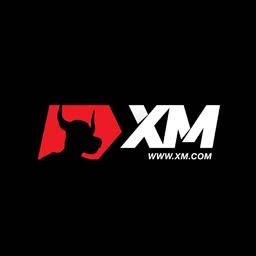
XM CFD stocks: 1,240
XM US CFD stocks: Yes
XM UK CFD stocks: Yes
XM CFD Indices: 28
XM Commodity CFDs: 15
XM ETF CFDs: 250
XM Forex CFDs: Yes
🤴 XM is Used By: 10,000,000
⚡ XM is Regulated by: Financial Services Commission (FSC), Cyprus Securities and Exchange Commission (CySEC), Australian Securities and Investments Commission (ASIC)
💵 What You Can Trade with XM: Forex, Stock CFDs, Commodity CFDs, Minors, Majors, Exotics, Equity Indices CFD, Energies CFD, Precious Metals
💵 Instruments Available with XM: 1000
📈 XM Inactivity Fees: Yes
💰 XM Withdrawal Fees: No
💰 XM Payment Methods: Credit cards, Debit cards, Bank Transfer, Electronic wallets (eWallets), Moneta, ABAQOOS, PRZELEWY24, Neteller, PerfectMoney, WebMoney, UnionPay, FasaPay, CashU, Payza, QIWI, SOFORT, Giropay, Payoneer, Skrill,
💰 XM Account Base Currencies:
XM Risk warning : CFDs are complex instruments and come with a high risk of losing money rapidly due to leverage. 77.74% of retail investor
accounts lose money when trading CFDs with this provider. You should consider whether you understand how CFDs work and whether you can afford
to take the high risk of losing your money.

eToro CFD stocks: 2,000
eToro US CFD stocks: Yes
eToro UK CFD stocks: Yes
eToro CFD Indices: 30
eToro Commodity CFDs: 31
eToro ETF CFDs: 65
eToro Forex CFDs: Yes
🤴 eToro is Used By: 20,000,000
⚡ eToro is Regulated by: Financial Conduct Authority (FCA), Cyprus Securities and Exchange Commission (CySEC), Markets In Financial Instruments Directive (MiFID), Australian Securities and Investments Commission (ASIC)
💵 What You Can Trade with eToro: Forex, Minors, Cryptocurrencies, Majors, Exotics, Indices, UK Stocks, US Stocks, Energies, Metals, Agriculturals, ETFs,
💵 Instruments Available with eToro: 2000
📈 eToro Inactivity Fees: Yes
💰 eToro Withdrawal Fees: Yes
💰 eToro Payment Methods: Credit cards, VISA, MasterCard, Maestro, Debit Cards, Bank Transfer, PayPal, Neteller, Skrill, WebMoney, Giropay, eWallets,
💰 eToro Account Base Currencies: USD
eToro Risk warning : 51% of retail investor accounts lose money when trading CFDs with this provider.
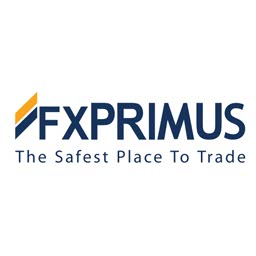
FXPrimus CFD stocks: 50
FXPrimus US CFD stocks: Yes
FXPrimus UK CFD stocks: Yes
FXPrimus CFD Indices:
FXPrimus Commodity CFDs: 20
FXPrimus ETF CFDs: 50
FXPrimus Forex CFDs: Yes
🤴 FXPrimus is Used By: 10,000
⚡ FXPrimus is Regulated by: Cyprus Securities and Exchange Commission (CySEC), Markets In Financial Instruments Directive (MiFID), Vanuatu Financial Services Commission (VFSC)
💵 What You Can Trade with FXPrimus: Forex, Minors, Majors, Exotics, Indices, UK Stocks, US Stocks, Energies, Metals,
💵 Instruments Available with FXPrimus: 130
📈 FXPrimus Inactivity Fees: No
💰 FXPrimus Withdrawal Fees: Varies
💰 FXPrimus Payment Methods: Credit cards, VISA, MasterCard, Debit cards, Bank Transfer, Electronic wallets (eWallets), Neteller, Skrill, Payoneer, SafeCharge, TrustPay, EmerchantPay, Bitcoin, UnionPay, FasaPay, Giropay,
💰 FXPrimus Account Base Currencies: USD, GBP, EUR, SGD, PLN
FXPrimus Risk warning : Losses can exceed deposits

easyMarkets CFD stocks: 50
easyMarkets US CFD stocks: Yes
easyMarkets UK CFD stocks: Yes
easyMarkets CFD Indices:
easyMarkets Commodity CFDs: 20
easyMarkets ETF CFDs: 50
easyMarkets Forex CFDs: Yes
🤴 easyMarkets is Used By: 142,500
⚡ easyMarkets is Regulated by: Cyprus Securities and Exchange Commission (CySEC), Australian Securities and Investments Commission (ASIC), Financial Services Authority (FSA), British Virgin Islands Financial Services Commission (BVI)
💵 What You Can Trade with easyMarkets: Forex, Minors, Cryptocurrencies, Majors, Exotics, Indices, Energies, Metals, Agriculturals, Options,
💵 Instruments Available with easyMarkets: 200
📈 easyMarkets Inactivity Fees: No
💰 easyMarkets Withdrawal Fees: No
💰 easyMarkets Payment Methods: Credit cards, MasterCard, Maestro, American Express, JCB, Astropay, Debit cards, Bank Transfer, SOFORT, GiroPay, iDeal, Bpay, Electronic wallets (eWallets), Skrill, Neteller, WebMoney, UnionPay, WeChatPay, FasaPay, STICPAY,
💰 easyMarkets Account Base Currencies: USD, GBP, EUR, CHF, JPY, SGD, AUD, CAD, CNY, CZK, HKD, ILS, MXN, NOK, NZD, PLN, SEK, TRY, ZAR
easyMarkets Risk warning : Your capital is at risk
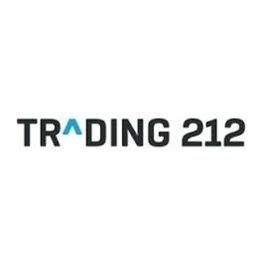
Trading 212 CFD stocks: 1,700
Trading 212 US CFD stocks: Yes
Trading 212 UK CFD stocks: Yes
Trading 212 CFD Indices: 51
Trading 212 Commodity CFDs: 45
Trading 212 ETF CFDs: 28
Trading 212 Forex CFDs: Yes
🤴 Trading 212 is Used By: 15,000,000
⚡ Trading 212 is Regulated by: Financial Conduct Authority (FCA), Financial Supervision Commission (FSC)
💵 What You Can Trade with Trading 212: Forex, Minors, Cryptocurrencies, Majors, Exotics, Indices, UK Stocks, US Stocks, Energies, Metals, ETFs, Bonds,
💵 Instruments Available with Trading 212: 10000
📈 Trading 212 Inactivity Fees: No
💰 Trading 212 Withdrawal Fees: No
💰 Trading 212 Payment Methods: Credit cards, MasterCard, VISA, Debit cards, Bank Transfer, Electronic wallets (eWallets), PayPal, Skrill, Dotpay, Carte Bleue, Direct eBanking, Apple Pay, Google Pay, iDeal, Giropay,
💰 Trading 212 Account Base Currencies: USD, GBP, EUR, CHF
Trading 212 Risk warning : CFDs are complex instruments and come with a high risk of losing money rapidly due to leverage. 76% of retail investor accounts lose money when trading CFDs with this provider. You should consider whether you understand how CFDs work and whether you can afford to take the high risk of losing your money.
If Fp Markets isn’t quite what you are looking for you can check out some of the best Fp Markets alternatives below.
If you would like to see Fp Markets compared against some of the best Fp Markets CFD alternatives available right now you can do so by clicking on the links below.